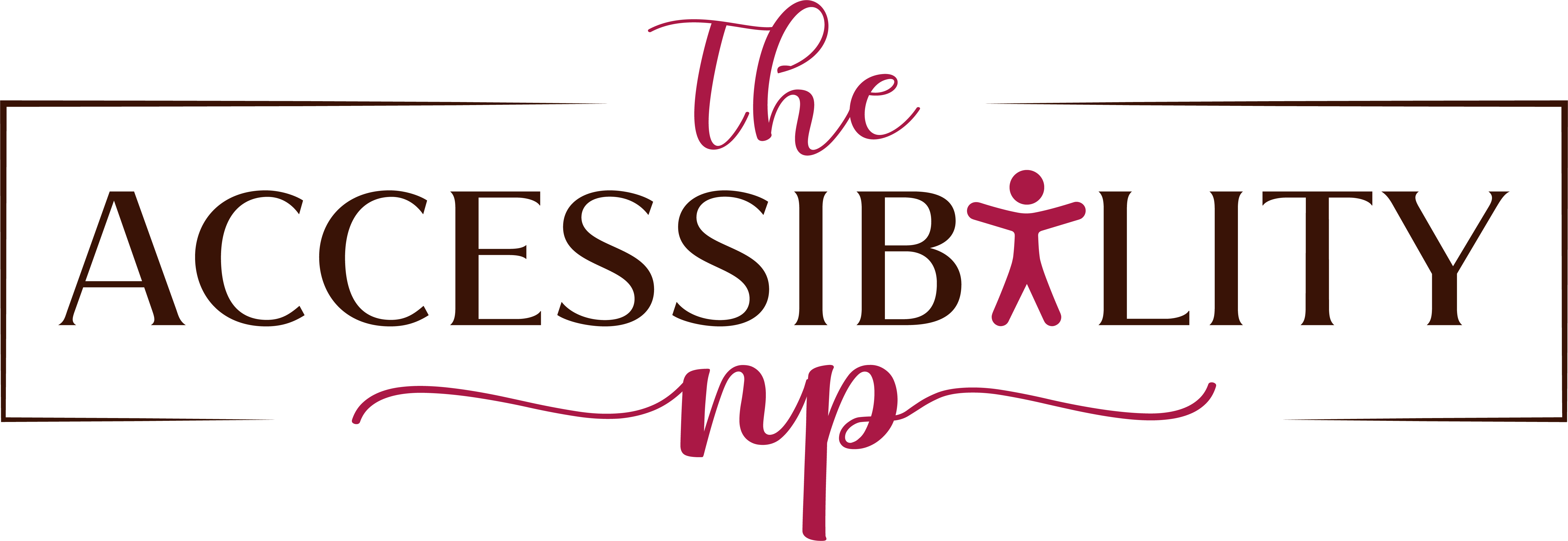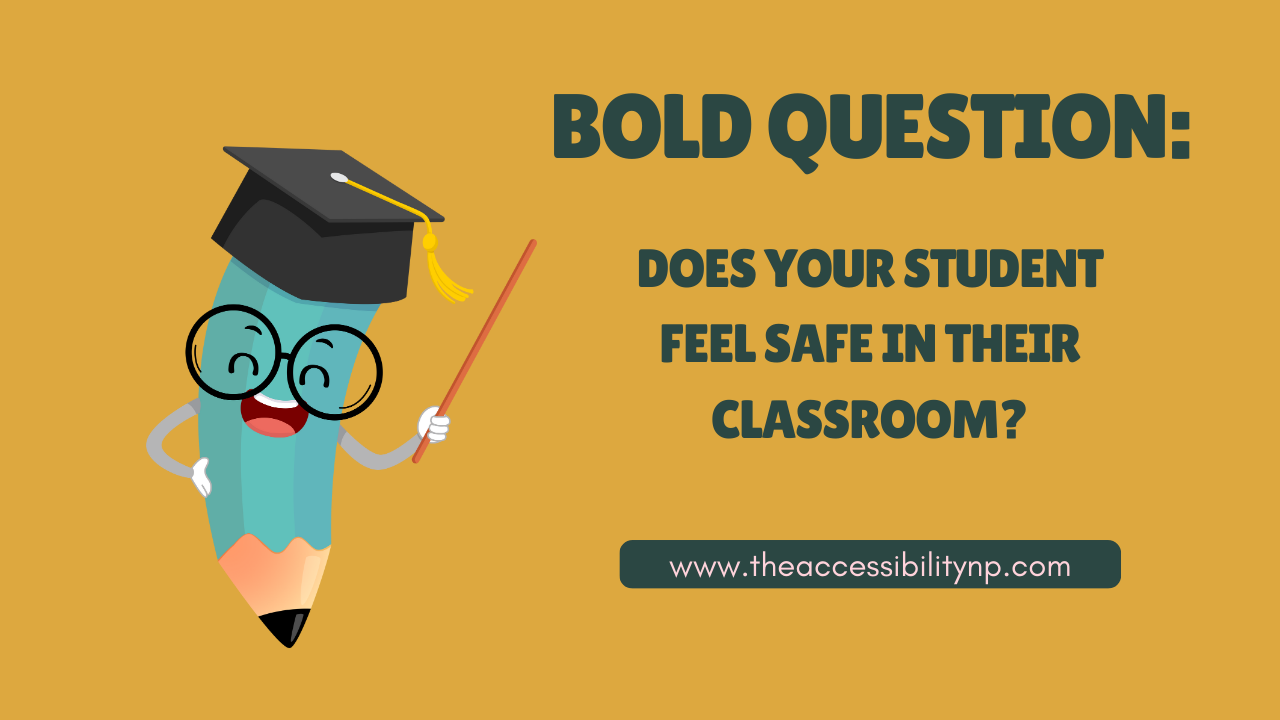Imagine walking into a room where you’re expected to learn, grow, and thrive—but you feel unwelcome or disconnected. For many students, this is a reality, and it raises a crucial question: does your student feel safe in their classroom? Safety isn’t just about physical well-being—it’s about emotional, social, and academic security. When students feel connected and valued, learning can flourish. Let’s explore the importance of connection, how it fosters an inclusive environment, and the role assistive technology (AT) and accessibility play in ensuring every student feels safe and supported.
Why Safety and Connection Matter
Safety in the classroom goes beyond locked doors and emergency protocols. It’s about creating an environment where every student, regardless of their abilities, feels respected and valued. Connection plays a pivotal role in achieving this. When students feel seen and heard, they’re more likely to engage, participate, and take risks in their learning.
For disabled students or those who use assistive technology, the stakes are even higher. A classroom that feels unsafe or unwelcoming can hinder progress and reinforce barriers. Conversely, when students experience genuine connection, they’re empowered to embrace challenges and celebrate successes.
The Link Between Connection and Learning
Research consistently shows that students who feel connected to their teachers and peers perform better academically. Connection fosters trust, reduces anxiety, and creates a sense of belonging. This is particularly crucial for students who may already face barriers to accessing the curriculum, such as disabled students or those using AT.
Imagine a student who struggles with verbal communication. Without connection, their attempts to participate might be overlooked or misunderstood. But when a teacher or peer takes the time to engage meaningfully, the student feels valued—and their learning blossoms.
Connection isn’t just about warm smiles and friendly greetings. It’s about:
- Listening: Taking the time to understand a student’s needs, interests, and concerns.
- Adaptability: Recognizing that each student learns differently and being willing to adjust teaching methods.
- Empathy: Seeing the classroom through the eyes of the students and addressing their emotional and academic needs with care.
Creating an Inclusive Environment Through Connection
An inclusive classroom is one where every student feels they belong. This can’t happen without intentional connection. Teachers and parents play a vital role in cultivating this environment by working together to address students’ needs holistically.
For Teachers:
- Know Your Students: Take the time to learn about their strengths, needs, and preferences. If a student uses AT, understand how it works and how it supports their learning.
- Foster Peer Relationships: Encourage collaboration and peer support. Connection isn’t just about teacher-student relationships; it’s also about students feeling supported by their classmates.
- Be Consistent: A predictable and structured environment helps students feel secure. Consistency in routines, rules, and expectations builds trust.
For Parents:
- Advocate for Your Child: Share insights with teachers about what makes your child feel safe and connected. If they use AT, provide strategies that work well at home.
- Communicate Openly: Maintain ongoing conversations with teachers to ensure your child’s needs are met. Connection between home and school reinforces a student’s sense of safety.
- Encourage Self-Advocacy: Help your child communicate their needs and preferences. Feeling heard is a powerful way to foster safety and confidence.
The Role of Assistive Technology in Connection and Safety
Assistive technology is a game-changer for many students, breaking down barriers and opening doors to learning. But AT is only effective in a classroom where the student feels safe and connected.
Here’s how AT can support connection:
- Facilitating Communication: For non-speaking students, AAC (Augmentative and Alternative Communication) devices can bridge the gap between thoughts and expression. A connected teacher knows how to model the use of these tools to foster meaningful interactions.
- Encouraging Independence: AT empowers students to take ownership of their learning. Whether it’s a speech-to-text program or a visual schedule, these tools give students the confidence to engage fully in the classroom.
- Reducing Barriers: Accessibility features like screen readers or alternative input devices level the playing field, ensuring every student can participate without feeling excluded.
When teachers integrate AT into their classrooms with understanding and intention, they send a powerful message: every student belongs here.
Building Bridges Between Home and School
Connection isn’t limited to the classroom. It extends to the partnership between teachers and parents. When this relationship is strong, students feel a consistent sense of safety and support.
Steps to Strengthen Home-School Connections:
- Share Success Stories: Celebrate milestones together, whether it’s a breakthrough in communication or progress on a challenging task.
- Collaborate on Solutions: Work together to address barriers, ensuring that strategies are consistent across home and school.
- Stay Informed: Keep open lines of communication about changes in a student’s needs, whether it’s a new AT device or an emotional challenge they’re facing.
Practical Tips for Fostering Safety and Connection
For Teachers:
- Start each day with a check-in, giving students a chance to express how they’re feeling.
- Use inclusive language and materials that reflect the diversity of your students.
- Model the use of AT and encourage all students to engage with it, normalizing its presence in the classroom.
For Parents:
- Practice active listening when your child talks about their school experiences.
- Encourage connections outside of school, like playdates or study groups, to strengthen peer relationships.
- Advocate for accessible and inclusive policies at your child’s school.
Final Thoughts
A classroom is more than just a place to learn—it’s a community. When students feel safe and connected, they’re not just learning academics; they’re building confidence, resilience, and a love for learning. For disabled students, these connections are especially critical. Through intentional efforts by teachers and parents—and with the support of AT and accessibility—every student can thrive in an inclusive classroom.
The question remains: does your student feel safe in their classroom? If not, what steps can you take to foster those essential connections? Because when students feel safe, the possibilities for their growth are limitless.
See you next Monday. Stay inspired and keep pushing for accessibility!

